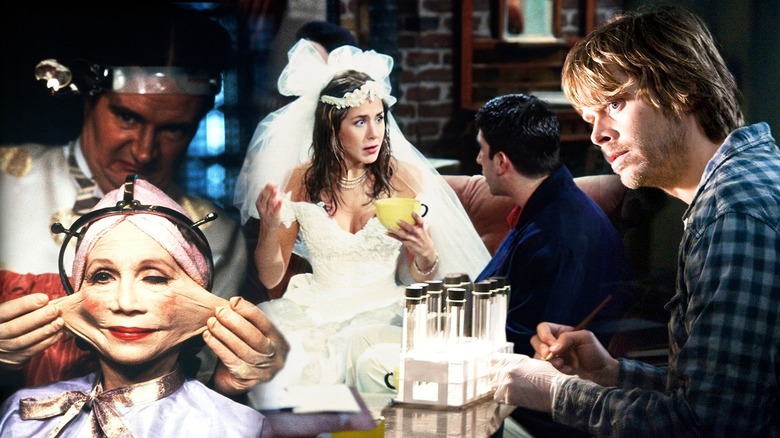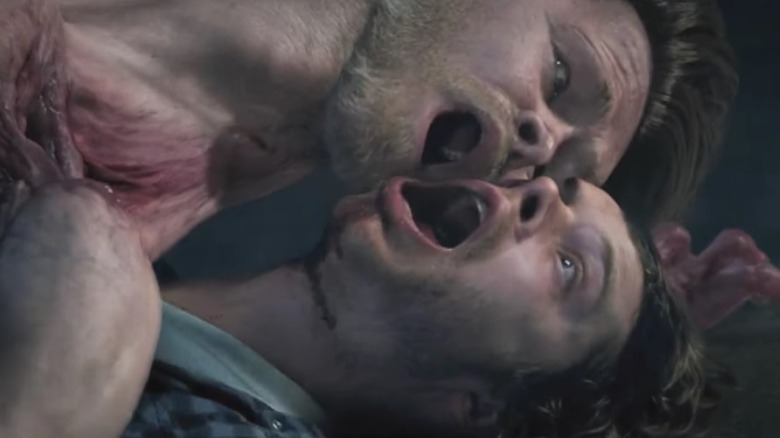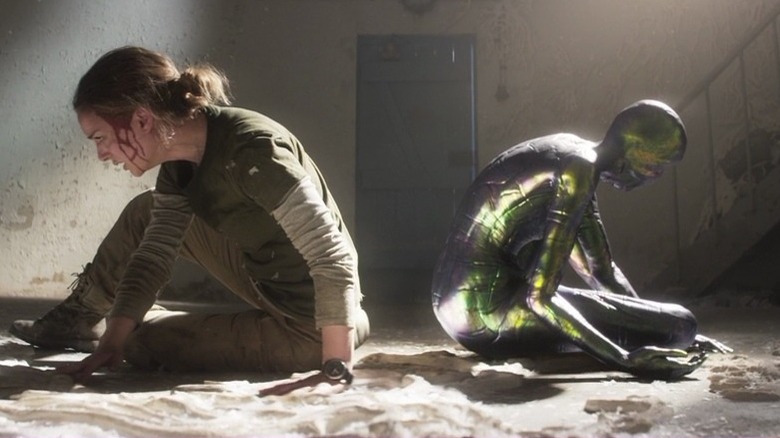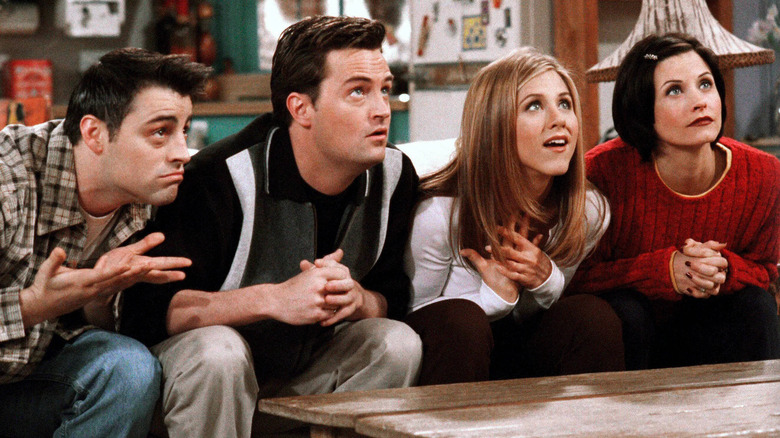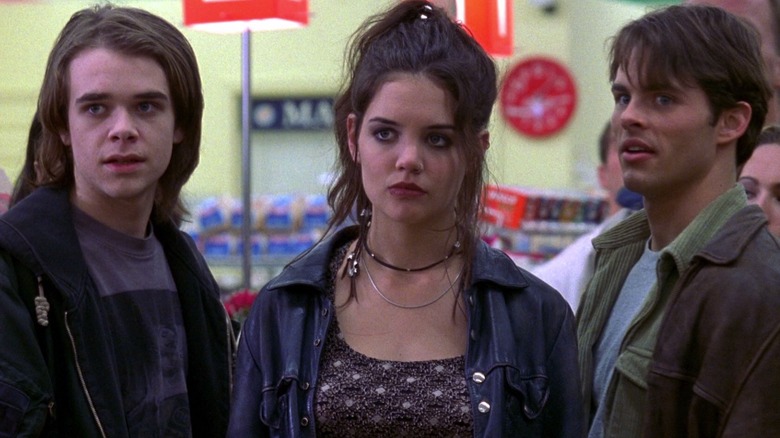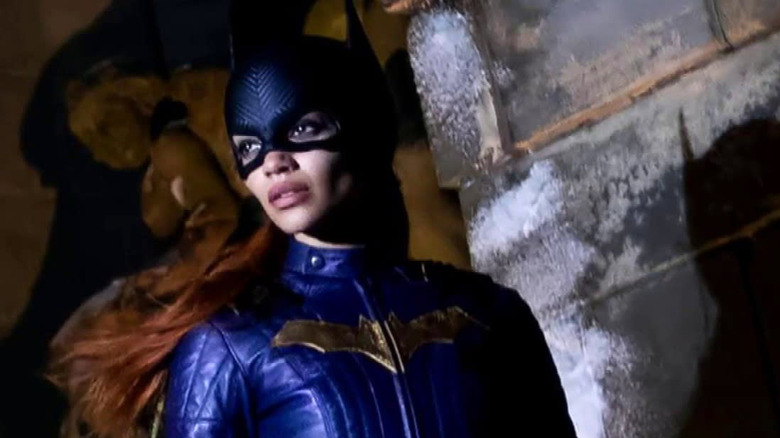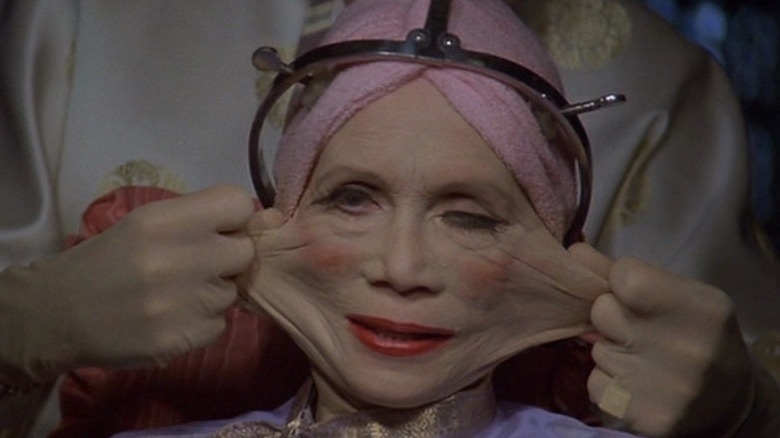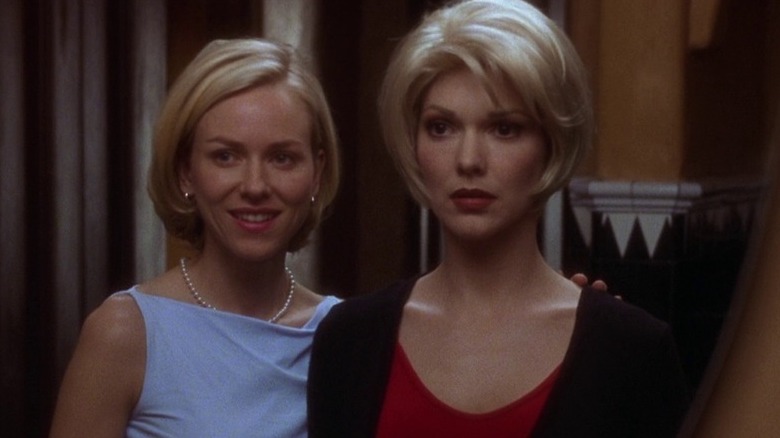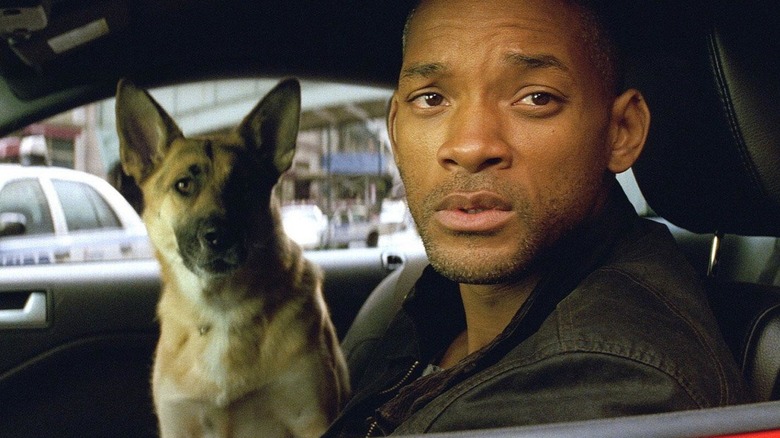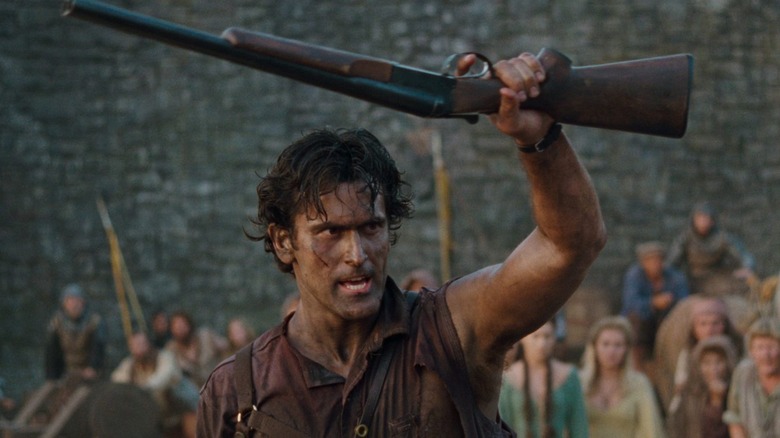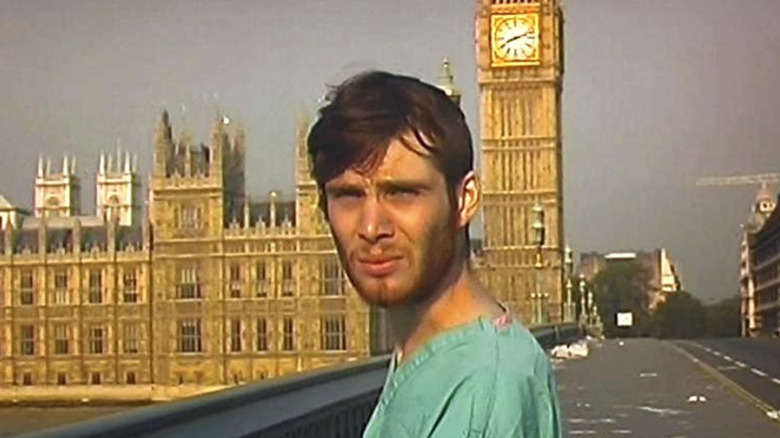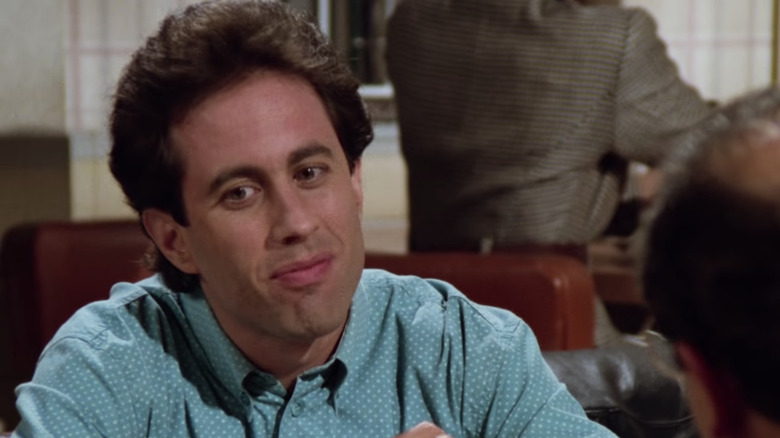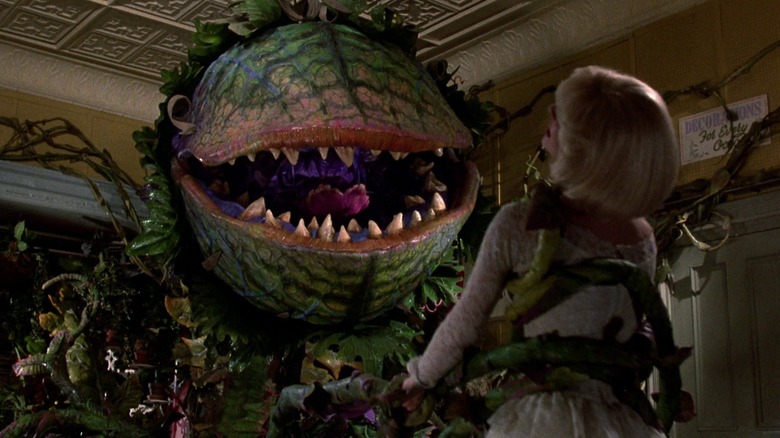The Most Disastrous Test Screenings In Movie And TV History
Test screenings involve showing a film or TV episode to sample audiences before it is released — and sometimes before it is even fully edited — and collecting their reactions to it. This gives the studio behind the project valuable information on how to market the movie or show, and sends them a warning if it isn't working in its current form. Plenty of studios and executives see test screenings as an integral part of the process, but many filmmakers take issue with them. "The Shawshank Redemption" director Frank Darabont sees them as a double-edged sword, saying in a Do The Right Films testimonial, "Test screenings are awful and miserable, but they will always teach you something about your movie that you really need to know."
"Shazam!" director David F. Sandberg has said that he finds value in test screenings but is an outspoken detractor of how studios conduct them. In a video on his personal Vimeo account, Sandberg explained, "The studio has a great movie on their hands, but then they round up the dumbest f***s in all of the land." After collecting their feedback, Sandberg says, "The studio panics ... they totally change the movie."
In the world of television, test audiences are often the arbiters who decide whether or not a pilot becomes a full TV series. Test screenings can be useful, but they sometimes make projects significantly worse or hurt a studio's perception of a good project before it is released — which was the case with each of the films and shows below.
The Thing (2011)
2011's "The Thing" reboot/prequel, which followed up John Carpenter's '80s sci-fi horror classic, is a notorious case of a film being completely destroyed by the test screening process. The film was written by Eric Heisserer, who later earned Oscar and BAFTA nominations for his script for "Arrival." At this point in his career, Heisserer had only written "Final Destination 5" and the 2010 "A Nightmare on Elm Street" remake, and he was beholden to all of the major changes that the studio imposed in the aftermath of the negative test screenings for "The Thing."
After test screenings and reshoots but before the movie went into wide release, Heisserer candidly told Bloody Disgusting that the poor reaction in the test screenings led the studio to bring in a more experienced screenwriter (Scott Frank, writer of "Minority Report" and "Get Shorty") for uncredited script doctoring. Heisserer said about the changes, "Right now, we get to the monster as fast as possible ... since the test screenings proved that's what those audiences wanted. I can't say yay or nay to it. But it does feel like there are pieces of it missing."
The test screenings also affected the film's special effects. 2011's "The Thing" was originally shot with practical effects, just like Carpenter's original film, but the studio then opted to cover up the effects with CGI after the negative test screenings.
Annihilation
While sci-fi fans will find a ton to love in the movie, Alex Garland's 2018 film "Annihilation" was a major bomb upon released. The direct cause of this financial failure can be tracked directly back to terrible test screenings.
Garland didn't hold back on his hatred of test screenings to the Wall Street Journal, saying, "Did we test brilliantly? No, we didn't ... For anybody who understands testing, it's not a surprise." Garland doesn't personally put any stock in the test screening process and revealed that his acclaimed film "Ex Machina" tested poorly too. Luckily, in the case of "Ex Machina," A24 stuck by Garland and trusted in his vision. With Paramount and Skydance Media putting up a significantly larger budget for "Annihilation," it became harder to ignore the test audience feedback.
The test screening response made Skydance Media head David Ellison fear that the movie was too complex and too intellectual for moviegoers to understand. This led to a major conflict behind the scenes, with producers clashing with each other and with Garland in explosive fashion. In the end, Garland refused to budge, saying, "When it says it in the script, it's like a contract — that is what I'm going to do." The film's release was affected as a result, with "Annihilation" going straight to streaming in many markets rather than the planned theatrical rollout.
Friends
Given that the NBC show "Friends" is by far one of the most popular and successful sitcoms ever made, it likely comes as a shock to find out that it was extremely poorly received in its early test screenings. NBC engages in extensive research and testing for all of the network's new shows, and the test screenings of the "Friends" pilot episode were so disastrous that the show was nearly axed instead of getting a full season order.
Traditionally, after test audiences view a pilot, the aggregated result of their reactions is boiled down to a score between 0 and 100. A series with successful prospects would usually be expected to score upwards of 70. "Friends" only earned a measly 41 out of 100, a failing grade.
One of the biggest issues indicated by the test audiences was that the cast of "Friends" didn't seem like friends. Test viewers were put off by the lack of caring, warmth, and chemistry between the main characters, who they considered to be largely unlikable. Another huge issue was that they just didn't find the show very funny or compelling, indicating that they wouldn't feel inclined to continue watching subsequent episodes. Of course, the eventual series went on to become one of the highest-rated series ever and audiences continued watching for a whopping 234 episodes.
Disturbing Behavior
"Disturbing Behavior" is a horror thriller from 1998 about a town where teens are mysteriously transformed into idealized versions of themselves. The film was trashed by critics and is largely forgotten today, but it could have been a classic in an alternate reality where test screenings didn't exist. A director's cut of the film was never made publicly available, but those who have seen it, such as Fangoria magazine, said the director's cut was a solid horror flick, whereas the theatrical cut was an incoherent mess that was butchered beyond recognition.
The director of "Disturbing Behavior," David Nutter, was extremely vocal about how the test screenings destroyed his movie, which was his feature-length directorial debut. About half an hour was edited out of the film, cutting it down to just 75 minutes. Vital scenes were scrapped, characters who were meant to die now lived through the entire film, and a new ending was mandated that bent to the whims of the test audiences.
Nutter told Fangoria that the studio wouldn't allow him to have any scene that lasted for longer than a single minute. If he had a two-minute-long scene, the studio would say, "You have to cut it in half." After this debacle, Nutter never got the chance to make another feature film, though he has continued working as a prolific television director.
Batgirl
A "Batgirl" movie starring Leslie Grace, Michael Keaton, J.K. Simmons, and Brendan Fraser was supposed to be released in 2022, but it wound up getting permanently shelved instead. Despite the big names involved, the $90 million budget, and plenty of hype around its release, Warner Bros. Discovery made the decision to pull the plug and cancel its release altogether.
The official statement from Warner Bros.-Discovery was that the cancellation was part of a general realignment of both the company's plans for its DC universe and HBO Max. This vague explanation didn't hold much water in the eyes of many people, with the real reason suggested to be a combination of poor test screening results and the financial benefit of using the movie as a tax write-off instead.
"The Town" podcast host Matthew Belloni offered some insight in an episode focused on the "Batgirl" controversy, saying, "[The studio was] trying to figure out whether it felt like it deserved a theatrical release, and the consensus was absolutely not ... it played like a TV pilot, the stakes were very small." The poor test screenings coupled with the underhanded tax benefit made scrapping the film altogether an appealing alternative to releasing "Batgirl" theatrically, squandering all of the time and energy spent by everyone who worked on the movie.
Brazil
A surreal sci-fi fantasy about the perils of dystopian bureaucracy, 1985's "Brazil" was directed by former "Monty Python" member Terry Gilliam, who had to fight tooth and nail with the studio to preserve his directorial vision. Universal President Sidney Sheinberg already had some issues with Gilliam's ideal version of the film, and poorly received test screenings exacerbated the problems.
Gilliam's original cut of the film was 142 minutes long. Sheinberg and test audiences agreed that was far too long. Universal wanted to cut the film down to 94 minutes, removing more than a third of its total content. Test audiences also disliked the dark ending and wanted it removed. Sheinberg didn't want Gilliam to shoot a new ending, preferring instead that he simply lop the end off and conclude the film earlier before the bleak reveal unfolds. When Gilliam refused, Universal's response was to not release the film in the U.S., though it was freely available in the U.K. via a different distributor.
With the fate of his film in jeopardy, Gilliam made the matter public and called out Universal. He also personally brought his cut in front of L.A. critics through private screenings, who loved it and gave it multiple awards, putting pressure on Universal to release it. In the end, Gilliam still had to make some cuts, but the final edit of the film was 132 minutes, significantly longer than the 94-minute studio cut.
Mulholland Drive
Before "Mulholland Drive" became an Oscar-nominated and BAFTA-winning film, it was first intended to be a television show. Filmmaker David Lynch had found major success with "Twin Peaks," his first foray into television. The show became an international phenomenon, but it was decidedly outside of the realm of traditional TV and struggled in the ratings in its second season, before ultimately meeting a premature cancellation.
Several years later, "Mulholland Drive" was Lynch's attempt to re-enter the world of television. He wrote and directed the pilot episode, which was 90 minutes long just like his earlier "Twin Peaks" pilot. He brought the pilot to the same network that had aired his previous show, ABC. After just one test screening, the network turned down the show. No other networks were interested in the series either, so Lynch nearly gave up on the pilot altogether. Luckily, he came into contact with Alain Sarde and Canal+, who gave him the funding and the motivation to repurpose the open-ended pilot into a self-contained feature film. The eventual film version of "Mulholland Drive" is now considered a masterpiece, but one can't help but wonder about the potential TV series that could have been and all of the other characters and side plots it might have explored.
I Am Legend
The 2007 post-apocalyptic thriller "I Am Legend" was a massive box office success, bringing in well over half a billion dollars worldwide. Despite the undisputed financial win, the film's quality was a bit more of a mixed bag with some major issues holding it back. One of the film's biggest failings was the direct result of poor test screenings.
The original ending of 2007's "I Am Legend" was more faithful to the novel it was based on. Dr. Neville (Will Smith) comes to learn that the creatures he has been battling — known as Darkseekers — are far more intelligent and sophisticated than he has given them credit for. They have their own society and aren't the malevolent, mindless monsters that he has painted them as. In the end, Neville realizes that he is the real monster in their eyes, as they see him abducting and torturing them in his lab. The meaning of the title becomes clear in the closing moments: Neville is the legend that the Darkseekers fear.
After test audiences reacted negatively to this ending, the studio panicked and opted for a different conclusion. The new ending was designed to appease those audiences but it proved to be a miscalculation. The replacement conclusion is unsatisfying, undercuts the film's themes, and contradicts the entire point of the film and its source material, not to mention the title, as Neville no longer realizes he is the bad guy.
Army of Darkness
"Army of Darkness" is the third film in director Sam Raimi's "Evil Dead" series, though you would be forgiven for thinking it was a standalone film based on the way Universal marketed it. Raimi wanted to call it "Medieval Dead," but the studio didn't want to be associated with the independently produced and extremely gory first two movies in the series. They wouldn't allow any permutation of "Evil Dead" to exist in the title, even though the second film's cliffhanger ending is vital to understanding the plot of "Army of Darkness."
Since the first two "Evil Dead" movies were made with such low budgets, Raimi retained complete creative control over them. When Universal ponied up a budget for "Army of Darkness" that was dozens of times larger, Raimi's creative control was now significantly lessened and test screenings became an unavoidable part of the process.
The film changed drastically after going through test screenings. The biggest alteration was the ending. Raimi wanted to have had Ash (Bruce Campbell) attempt to return from the past to the present, but make a bone-headed error in classic Ash fashion that lands him in an apocalyptic future where he goes mad. This was an on-brand ending that suited the series, but test audiences pushed Universal in a different direction when they considered it too bleak. The new ending was lighter and concluded with Ash getting back to his present, where he has a fun and goofy action scene in S-Mart to close out the film.
28 Days Later
"28 Days Later" is a 2002 horror film set, as the title implies, 28 days into a zombie-like outbreak in London that has decimated the population. The film was directed by Danny Boyle and written by Alex Garland, who collaborated many times throughout the 2000s. "28 Days Later" was Garland's debut as a screenwriter, but right out of the gate — and long before he became a director himself with "Ex Machina" in 2014 — Garland's work was already being distorted at the behest of test audiences.
Garland's scripted ending had the film conclude on a downbeat note with the main character, Jim (Cillian Murphy), dying and leaving Selena (Naomie Harris) and Hannah (Megan Burns) to survive on their own. Test audiences had a negative reaction to this ending and considered it too bleak. A replacement was whipped up in which Jim survives and the three remaining leads live a peaceful life out in the countryside as the future of the outbreak begins to look less hopeless. This more optimistic ending might sound fine in a vacuum, but it runs counter to the dark and realistic tone of the entire film that preceded it, not to mention that it undercut and/or destroyed some of the film's themes. This was a story that needed a bleak ending, but test audiences said no.
Seinfeld
"Seinfeld" towers as one of the most beloved sitcoms of all time. Across its nine seasons, the show racked up 10 Emmy wins and an unbelievable 58 additional nominations. Today, the series ranks in the top 50 highest-rated TV shows of all time and is fondly remembered. But the series almost failed to get off the ground when it first started, as test screenings of the pilot nearly got the show canned right away.
The audience research conducted by NBC stated, "No segment of the audience was eager to watch the show again." The show was called boring, unfunny, and confusing, while even NBC executive Brandon Tartikoff thought the series was too New York and Jewish-centric. Because of this terrible reception, the show premiered in the middle of the summer, usually a sign that the network had no interest in taking it any further. This is why the first season of "Seinfeld" consisted of just five episodes, whereas later seasons typically contained the standard 22 episodes.
Despite its chances for success being slashed by its own network, the quality of the series shined through and the show managed to find its audience. With the deck stacked against it, "Seinfeld" proved its detractors wrong.
Little Shop of Horrors
"Little Shop of Horrors" is the 1986 adaptation of the musical stage play of the same name, which was itself a re-imagining of Roger Corman's ultra-low-budget horror comedy from 1960. But the studio, Warner Bros., was initially unwilling to put out a film that received such a negative reaction with test audiences.
The big issue was the ending, which had worked so well on the stage. Director Frank Oz told Entertainment Weekly that the test screening was going wonderfully at first: "There was applause, they loved it, it was just fantastic." However, the audience reaction soured instantly at the end of the film. The original ending had Seymour (Rick Moranis) get eaten and killed by the talking plant Audrey II, who then continues growing to gargantuan heights, rampaging through New York City, and climbing to the top of the Statue of Liberty before busting through the screen, winning in the end while the heroes perish.
Test audiences hated the ending, with Oz explaining, "You have to have a 55 percent 'recommend' to really be released and we got a 13." Warner Bros. forced Oz to shoot a new, happier ending that let the heroes live. Under the threat of having the film go unreleased, Oz begrudgingly complied. Looking back, he said, "We had to do it, and do it in such a manner that the audience would enjoy the movie. It was very dissatisfying."
